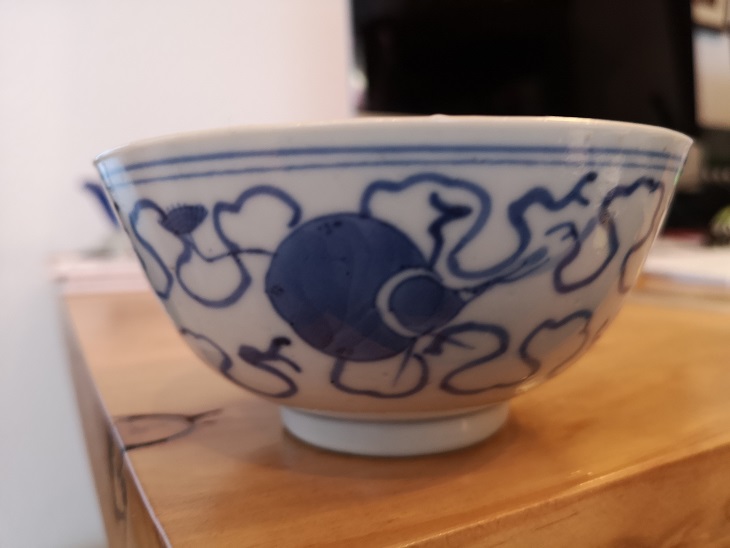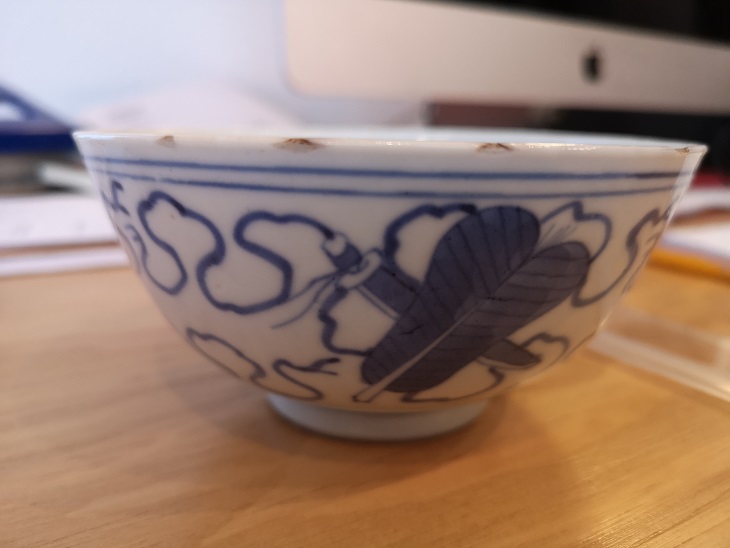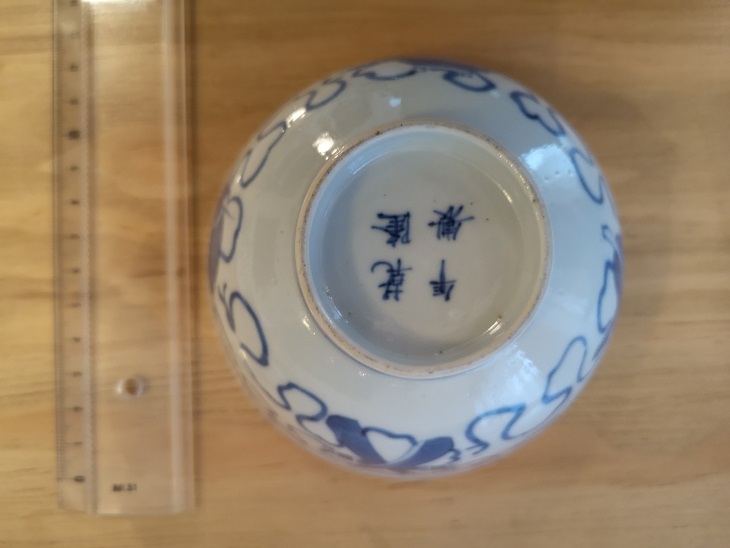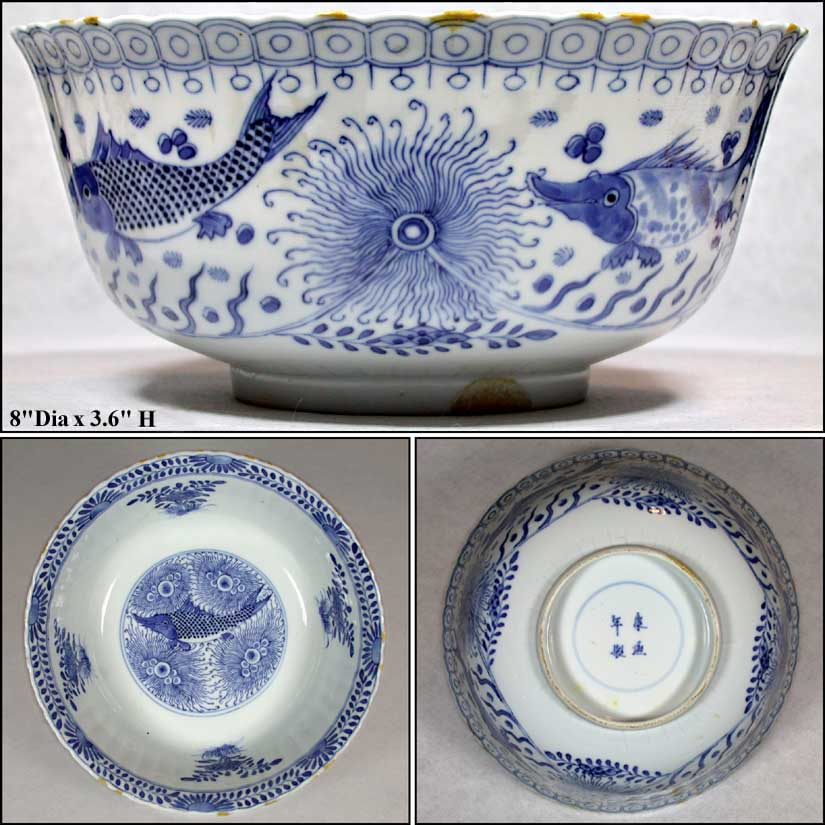
|
Subject:Re: Chinese Ble bowl - Help identify
Posted By: Bill H Thu, Mar 07, 2019
Your assumptions are correct. In Anthony J. Allen's most recent book, "Allen's Antique Chinese Porcelain -- The Detection of Fakes", he cites a rule of thumb, stating that Kangxi, Yongzheng and Qianlong reign marks weren't faked on Chinese porcelains until the Guangxu reign (1875-1908). However, all three fake reign marks have been extensively employed since that time.
As to value, my sense of the pattern is that your bowl with an auspicious motif for Chinese Daoists might have come from a larger dinnerware set used by Chinese restaurants, thus is more common and less valuable with the damage shown. The bowl I've pictured probably has more damage, but it is larger, has a modicum of conservation and was made during a time when there was a renaissance underway in the manufacture of Kangxi-style porcelains. So while it might bring a hundred dollars or a bit more at auction, an undamaged example in the same pattern and of the Guangxu period would probably sell for much more.
Best regards,
Bill H.


|
 Chinese Ble bowl - Help identify
Chinese Ble bowl - Help identify  ( China & Japan ) - Pascal Exbrayat - Mar 04, 2019 (04:35 AM)
( China & Japan ) - Pascal Exbrayat - Mar 04, 2019 (04:35 AM)  Re: Chinese Ble bowl - Help identify
Re: Chinese Ble bowl - Help identify  - Bill H - Mar 04, 2019 (02:49 PM)
- Bill H - Mar 04, 2019 (02:49 PM)  Re: Chinese Ble bowl - Help identify - Pascal Exbrayat - Mar 05, 2019 (02:11 AM)
Re: Chinese Ble bowl - Help identify - Pascal Exbrayat - Mar 05, 2019 (02:11 AM)  Re: Chinese Ble bowl - Help identify - Bill H - Mar 07, 2019 (12:49 AM)
Re: Chinese Ble bowl - Help identify - Bill H - Mar 07, 2019 (12:49 AM) 


